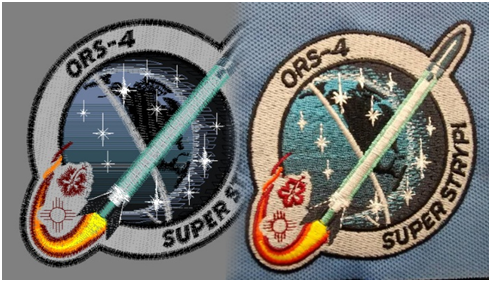The global business scene changed drastically in the wake of the COVID-19 pandemic. A large proportion of transactions shifted from the traditional brick-and-mortar to the digital platform. The shift cut across all sectors to the extent that health care providers now practice telemedicine and consult online. Businesses must modernize and evolve to survive in the new digital ecosystem.
However, besides the data management and hardware upgrade, prioritize value creation in your transformation strategy. Make value creation the primary goal for the modernizing program while upgrading operating systems to enhance customer experience. The following guides can help your business stay competitive in the dynamic and evolving global market.
Evaluate your needs
Before embarking on modernization, take stock of your status. Review existing digital assets, infrastructure, and their capacity for the planned modernization. Research diligently the operational dynamics in the marketplace and, most importantly, what the competition is doing. Collate this data to form a clear picture of where you want your business to be in the future. Finally, decide what works for your customers and their response to digital interaction before moving to action.
Reviewing and repurposing available assets can lower the cost of the modernization program. Your mainframe modernization strategies, for example, can focus on system upgrades and adaptation of new technology instead of total replacement. Conduct research into consumer trends and behavioral traits to formulate a modernization strategy that meets their expectations. The migration to the digital platform must not leave your customers behind.
Map out the customer journey
Customer acquisition and retention is the driving force for business success. Every business strives to keep its customers satisfied by anchoring its service on superior CX. How fast you solve customers’ problems and the speed of service delivery determines the return or churn rate. How you handle online sales issues that may include return and refund policies affects CX. Understand your customers’ expectations clearly before modernizing your business.
Set up a team to map out vital touchpoints in the customer’s journey. Since the current trends lean towards online transactions, consider the digital touchpoints that include your website, social media, mobile apps, and chatbots. Using feedback from your customers, modernize these aspects to provide a delightful and memorable digital experience (DCX). Constantly review systems and apps to fix any emerging weaknesses across your digital footprint. Use cloud data computing to provide a seamless interaction between all channels for a better DCX.
Create a transformation team
Perhaps you engaged outside help to audit your assets and collect customer data in the preliminaries. However, the next phase requires a dedicated task team to run the program from strategy design to implementation and continuity. Select and empower a super team from internal departments and external sources to oversee the transformation journey. The selected team must have strong leadership and enjoy management support in a conducive working environment.
The composition of the transformation team is vital to its success. The team must comprise people with requisite qualifications for specific roles to provide expert guidance. Start with a competent planner that is conversant with the organization’s business model to drive the change. You will need an architect to design solutions, reengineer processes, and connect systems. Identify a suitable product leader and an analyst to review achievements, milestones, and process flow. Finally, engage support staff and fund the program.
Build prototype, test, and iterate
Now that you know the type of modernization suitable for your business, the team must start by building a prototype. Build a prototype based on the data collected during the research phase and simulate it in real-life scenarios. Prototypes are testing tools that refine an idea into the final design. Prototypes also take less time and money to build, discard, and reconstruct with less strain on the budget.
Since your modernization goals are operational excellence (OpEx) and digital customer experience (DCX), define your metrics and build prototypes that respond to known expectations. Build and share with all stakeholders before conducting test sessions with users. Review feedback from tests, iterate and build again to perfect the design. Involve every category of users along this journey to ensure a comprehensive system development. Once the prototype gets approval, develop the final product for installation or launch.
Launch the new operating standards
Once the new standards pass design and functionality tests, it’s time to incorporate them into the organization’s operating systems. During this phase, communication is critical to sharing information about the intended change across all sectors. Before launch, conduct adequate training to empower employees to use the new operating procedures to ensure a smooth transition.
Ensure the new operating procedures resonate with the company’s vision, strategy, and values. The designs must be easy to use in daily transactions, reviewable, and updateable, for future improvements. Have the procedures properly documented and incorporate them in the staff training programs. Entrench the standards with strong policies as a culture in your business to spur growth, competitiveness, and customer satisfaction. Remain alert during the early stages of deployment to mitigate any operational emergencies. During this phase, retain the old system as backup in the event the new system falters.
Educate, communicate, and reorganize
Business systems modernization must upgrade processes and empower the workers simultaneously. Workers knowledgeable in legacy systems may resist or fail to use the new standards as intended. Conduct seminars to introduce the expected changes and offer training in the new standards. Educate the staff to use cloud-based digital tools in solving customer problems. Create general awareness across the organization about the modernization program to elicit acceptance.
The new changes will affect the business organizational flow, and traditional channels may merge as others disappear altogether. The new-look customer-centric structure may operate as a one-stop service point, leaving some employees without duties or confused about their roles. The management must restructure previous silos into multi-disciplinary teams in an open working environment. Revise employee assessment metrics and incentives to motivate acceptance of the changes. Finally, install monitoring mechanisms for continuous systems review, interventions, and constant software updates.







